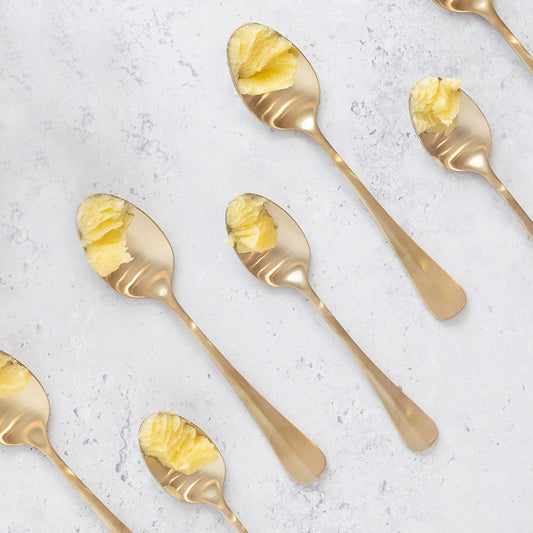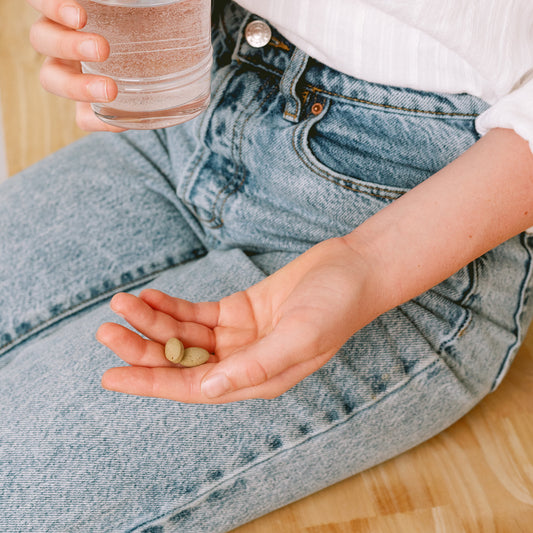Winter for Vata-Kapha and Kapha-Vata

Winter is a time when the qualities of kapha are high in the atmosphere. There are also many vata qualities presenting themselves at this time of year as well. If your constitution has high amounts of both vata and kapha, your best strategy for staying balanced this winter will be to assess your body's present state of balance and the influence of your local weather on a day-to-day basis.
With a refined sense of awareness, you can adapt your routine to pacify either vata or kapha or both—depending on your changing needs. To this end, you may find it helpful to read both the vata and kapha sections for more useful tips on how to pacify either of these doshas at any given time.
Ideal Winter Foods for Vata-Kapha and Kapha-Vata
Eat warm, cooked foods that are generously spiced with a variety of flavors.
- Fruits like apricots, berries, cherries, peaches, soaked prunes, and soaked raisins will be especially supportive for you this winter.
- Good veggie choices this winter include asparagus, carrots, chilies, green beans, mustard greens, okra, rutabaga, and cooked spinach.
- For a sweetener, choose honey (never cooked or aggressively heated).
- Opt for grains like amaranth and basmati rice.
- When balancing kapha, most beans and legumes will be balancing kapha because they have an energetically drying action.
- However, if vata is imbalanced, most legumes will be too drying. Beans that will best pacify vata are somewhat less dense, rough, and dry than other legume varieties and should be well-cooked and well-spiced. These include red lentils, miso, yellow mung dal, mung beans, toor dal, and urad dal.
- Dairy products from goats will be supportive for both vata and kapha. Milk alternatives from soy are also good options, as is ghee.
- Favor oils for cooking that are warm but not too dense or “oily.” These include mustard oil and sunflower oil.
- For meat, freshwater fish and shrimp are great options.
- Snack moderately on light seeds like pumpkin seeds, and sunflower seeds.
Acceptable Winter Indulgences
The heaviness and moisture of the winter season may allow you to enjoy some foods that would normally upset vata: caffeinated teas, Hot Spiced Chai, a cup of coffee or espresso, or a particularly spicy dish.
On the other hand, the cold, dry weather will allow you to indulge in some sweet, nourishing treats like warm Maple Tapioca that might upset kapha at other times of year.
Foods to Minimize
Regardless of which dosha you're focusing on, you'll definitely want to reduce iced drinks, cold or frozen foods, and leftovers.
You'll also want to steer clear of foods like watermelon, white sugar, spelt, soy beans, soy flour, and pork, which are aggravating to both vata and kapha.
In addition to minimizing those foods, keep tabs on your digestion and watch for signs of excess kapha (heaviness, lethargy, brain fog) and excess vata (gas, bloating, feelings of anxiousness), and adjust your diet accordingly.
Winter Lifestyle Tips for Balancing Vata and Kapha
To pacify both kapha and vata, you'll want to balance predictability with spontaneity, relaxation with stimulation, and quiet stillness with active engagement. Strike this balance in your relationships, work habits, exercise routine, and in your mental presence.
Change up your habits to be more vata-pacifying or more kapha-pacifying, depending on your local weather and any fluctuations in your internal state of balance.
If the weather is wet, cloudy, and heavy, and/or if you find yourself feeling sluggish, weighed down, or lacking motivation, shift to a more kapha-pacifying lifestyle for a few days and see if you feel a shift.
If the weather is cold, dry, and windy, or if you're feeling isolated, lonely, overextended, or depleted, embrace a more vata-pacifying lifestyle until you start to feel more stable and calm.
The most important thing is for you to cultivate awareness of your inner needs so that you can protect both vata and kapha this winter.
About the Author
Melody Mischke, AP
Melody Mischke is a certified Transformational Coach, Ayurvedic Practitioner, Yoga Teacher, Writer, and Intuitive. She began studying meditation in India at 18, and has...
More for You
Winter for Vata
If vata is predominant in your constitution, you are less likely to be disturbed by the kapha aspects of winter. Instead, you will want to focus intently on countering winter’s vata qualities.
Winter for Kapha
If kapha is your primary dosha, be more attuned to kapha accumulation than vata this winter. You will want to counter kapha’s cold, damp, heavy qualities with elements of heat, dryness, and light.








